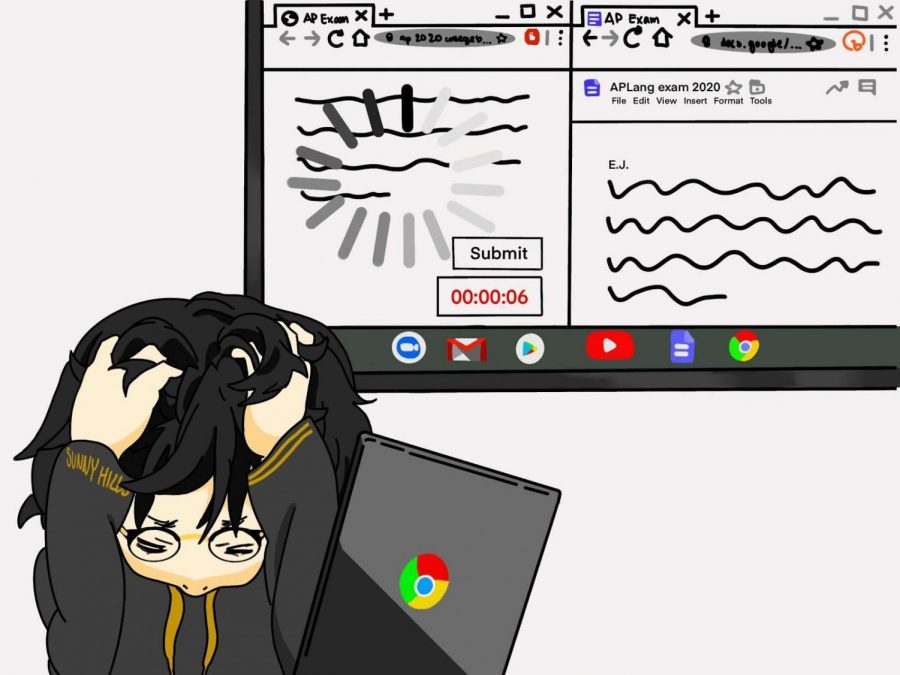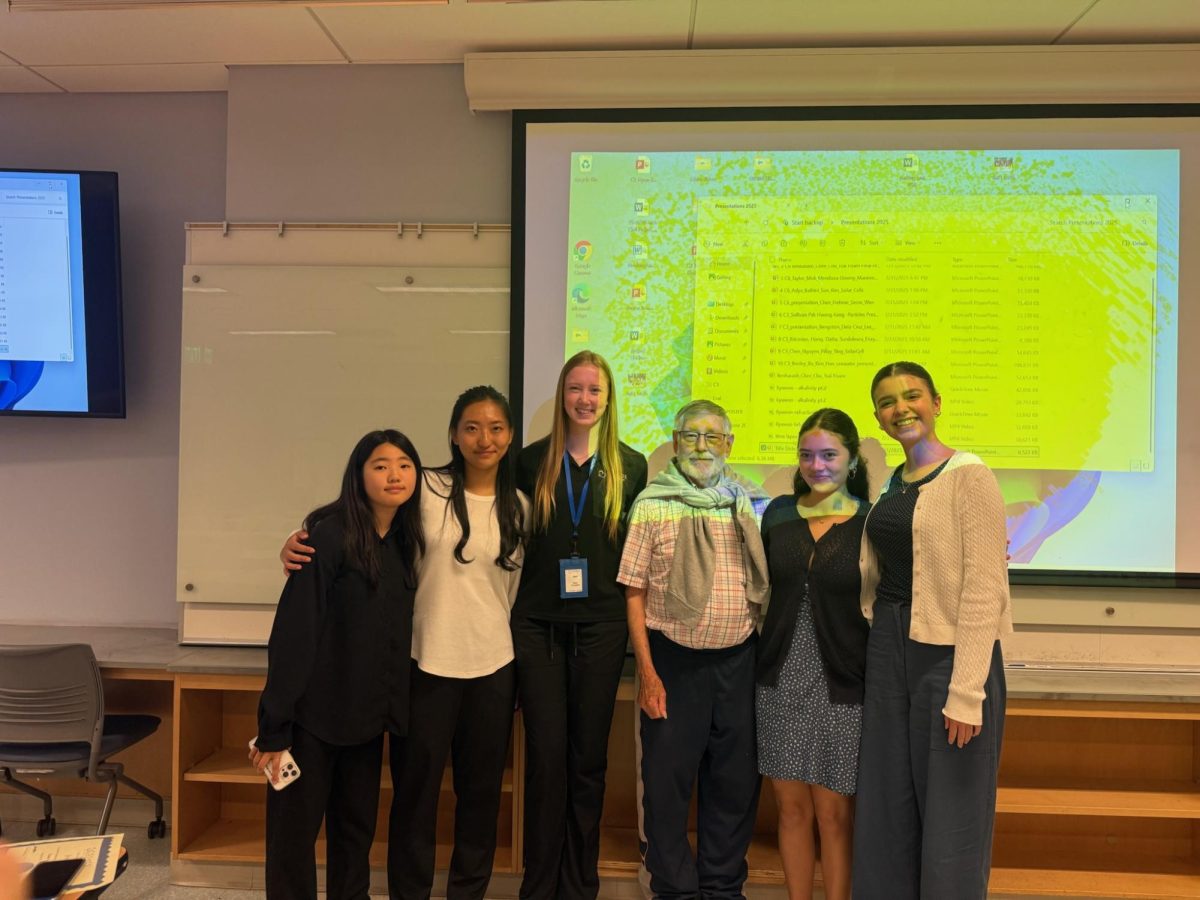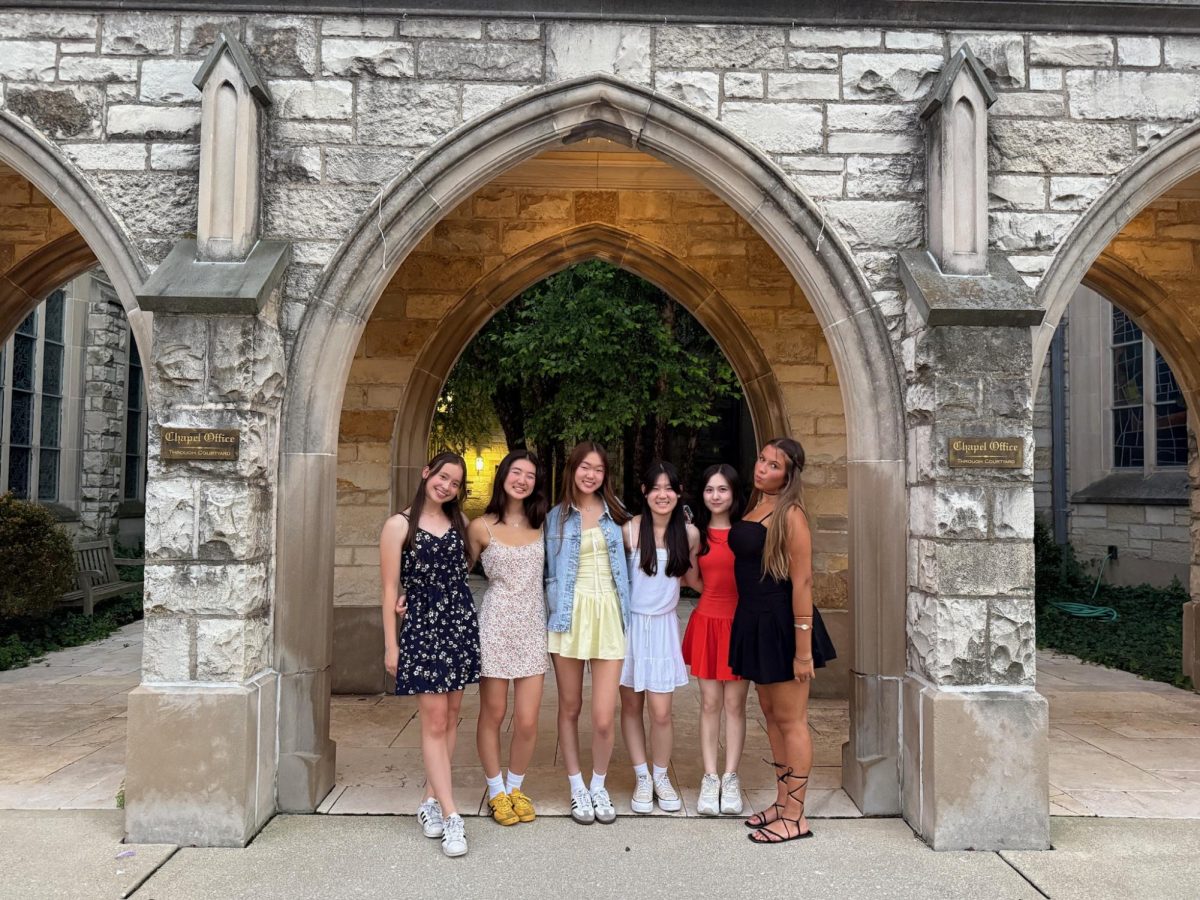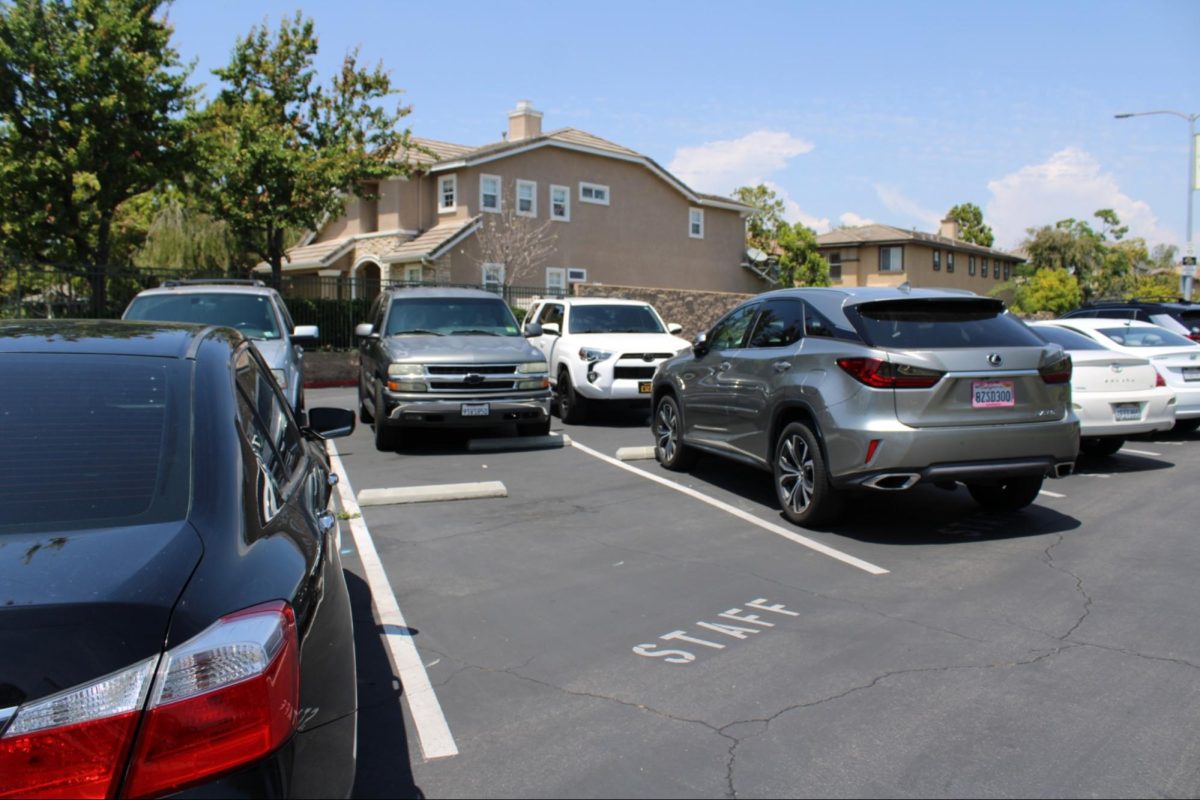11:50 a.m.
I let out a sigh of relief as I took my fingers off the keyboard.
The piercing white background of the College Board website blankly stared back at me. After 50 arduous minutes of anxiety-driven typing, I looked over my Advanced Placement [AP] English Language and Composition essay for any last-minute grammatical mistakes and confidently pasted the text onto the provided blank space on the website. With five minutes remaining, I leaned back in my chair and stared at the ceiling — relieved that I had finished my last of three AP tests.
If it wasn’t for the notification that I had one minute remaining on the exam, I could’ve fallen asleep right then and there. However, it was only when I sat back up and caught a glimpse of the red-outlined numbers counting down that I realized what was happening.
My essay isn’t submitting.
As my heart sank into my stomach, all the anxiety of online test-taking resurfaced.
I tried clicking the blue submit button again. I tried spamming the enter key on my keyboard. I stared in horror as the numbers continued to count down.
Eight seconds left.
I paid $95 for this.
Seven seconds left.
I spent a whole school year studying for this.
Six seconds left.
I braced for impact.
And then, a message popped up.
“Congratulations! You have successfully submitted your exam!” it read, completely oblivious to the minute of terror I had just overcome.
Fast forward to the start of this school year, and with five AP courses on my class schedule, I’m once again deciding which exams I should pay for. But with last year’s difficulties still fresh in my mind, I couldn’t imagine taking another online test from the College Board.
However, my worries were laid to rest after a Sept. 4 announcement on the College Board website resolved two huge issues I had with last year’s exam: the price of the exam and the lack of content covered.
Last year, the organization charged students $95 for the tests, shortened to 45 minutes because of the COVID-19 pandemic — most of which were only two questions. That’s $47.50 per question!
According to the College Board website, the traditional in-person tests last for about two to three hours and consist of multiple choice questions, short answer responses and — for some exams — several multi-paragraph essays. With last year’s online model, students were limited to only one of the two possible forms of submission — writing an essay or answering multiple choice questions. Combine this with a test duration that was only one-third as long as the in-person exam, and you were left with a waste of $95.
However, in hopes to alleviate the burden of money in an unreliable online exam, the College Board has taken a weight off students’ shoulders by removing any cancellation fees for the AP tests. Under normal circumstances, students who cancel or don’t show up for exams must pay a $45 fine given by the school. Now, students no longer have to dig through their parents’ wallets to cancel an exam, as long as they cancel their tests by March 12.
Another gigantic flaw in last year’s exam was the amount of content that was covered. By condensing a year’s worth of curriculum into two questions, the College Board was heavily limiting students’ abilities to prove their knowledge on a subject.
Say hypothetically, students knew everything about chemistry except for two discrete lessons. If the College Board centralized last year’s chemistry exam on those two lessons, then those students would’ve received an extremely low score that inaccurately portrayed their overall knowledge of chemistry.
This lack of content on last year’s exam completely undermined the other aspects of a subject that students may be more comfortable with. As a result, students were left to question whether or not they didn’t pass because of a lack of studying, or because they simply got unlucky with the content that the College Board assigned.
But now, the College Board has stated that the 2021 exams will cover the full content in each course, meaning that students are required to actually understand the entire subject rather than answering a few topics from it. Of course, this is assuming that the College Board will be giving its regular test, as for there are no confirmations that the same content will be covered if AP exams go online in May.
The most notable benefit from this change is that scores will now accurately depict a student’s knowledge on a year’s worth of studying unlike last year’s shortened version of the exams. A 5 on the AP Chemistry exam now means that a student knows all of AP Chemistry rather than just two topics featured in the two AP exam questions.
Finally, the College Board’s decision to host in-person exams despite the current coronavirus situation marks a commendable step forward that other educational institutions should take after. It goes without saying that in-person exams definitely result in a more streamlined testing experience. And as health organizations aim to release coronavirus vaccines by the end of 2020, I appreciate the College Board’s quick thinking in returning physical testing for students taking AP tests in May. As a senior who lost a lot of testing opportunities for the SAT because of testing centers closing, I definitely would want underclassmen to take in-person tests as soon as possible.
So to my fellow victims of last year’s traumatic AP testing experience, I hope you can come out of hiding and recognize the College Board’s efforts.
During this time of uncertainty, one thing that students can be certain about is that the College Board recognizes the challenges that come with testing in such an environment and is doing its best to alleviate such concerns.
And it’s because of this recognition that I strongly believe that students shouldn’t be afraid to potentially earn themselves some college credit and take the AP tests this year — not on a chromebook, but on paper. And even in the scenario that the COVID-19 pandemic worsens and AP exams need to go online, I believe that the College Board can learn from last year’s difficulties and make sure the tests cover the content fully — both online and in-person.














